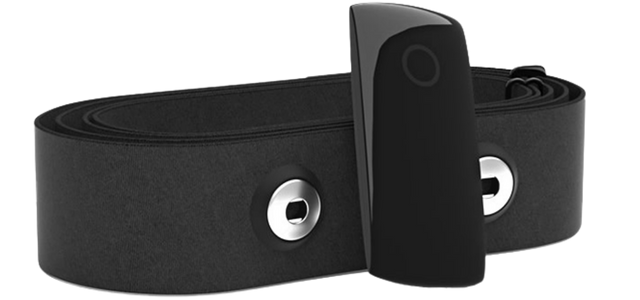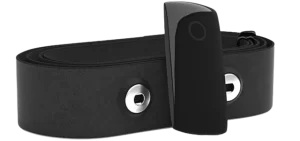HRV: Most Important Metric for your Fitness and Health

HRV, what is it? HRV is heart rate variability, meaning the time between heart beats. If you are wondering why is this important, then you should read the rest of this blog. What does HRV have to do with your health and fitness?
These are great questions and will be answered in this article.
Before you read about HRV, I do want to say that I was wrong. Without knowing much about it, I used to think it wasn’t something to worry about. If you care about your health and your fitness, your HRV is definitely something you want to know more about.
Now, I am working to spread the word of heart rate variability and its importance. Now that I said that, hope you enjoy and learn something new.
HRV and Heart Rate
Before, I answer the questions above, lets go over the HRV and how it is different with heart rate.
Put simply, your heart rate is the number of times your heart beats per minute. It can be used to measure your aerobic fitness and the intensity of your training. The lower your resting heart rate is, the better your aerobic fitness is.
Your HRV is the variability between heart beats over time. Your heart is not a metronome, the time between beats is constantly changing.
Generally, this change of variability can tell you about your body’s balance between the sympathetic nervous system and the parasympathetic nervous system.
Parasympathetic and Sympathetic Nervous System
Little background on your nervous system, your body’s way to determine if needs to get alert and ready to fight or flight, or to rest and digest.
Firstly, your sympathetic nervous system is responsible for these actions in the body:
- Increased heart rate
- Increased breathing
- More alert and focused
- Increased blood flow to muscles
- Decreased blood flow from organs and skin
The sympathetic system will dominate when you respond to a stressful situation, an emergency, or when you work out.
Lastly, parasympathetic nervous system is responsible for your recovery, the rest and digestive system. In the body here is what you will expect:
- Lower heart rate
- Decreased breathing
- Decreased blood flow to muscles
- Increased blood flow to organs and skin
- Increased rate of digestive system
Basically, they are complete opposites of each other, and never fully on or off. There is a balance between the systems.
When you want to recover, you want to be more in the parasympathetic system than the sympathetic, so you can get the adaptations from the training.
How do you know when your body is in which system?
This is where measuring your HRV can be handy.
HRV for Recovery
Your HRV is a score, the time in milliseconds between heart beats over time. The higher the score, the more you are in a parasympathetic system. A high score means you have more energy from your body going towards recovery.
HRV does not directly measure recovery, it is more of a window that looks at the balance of stress and recovery.
You can have a low HRV for the day, but still get a great workout in later. Know this though, it will take longer to recover from that workout. A low score means more energy is directing towards stress, and more stress will make it harder to recover.
Simply, you are a digging a deeper hole, and will take more time to get back to baseline. Use HRV as a tool to help gauge the balance between stress and recovery.
Stress can be physical and mental; the brain doesn’t know the difference. Stress is stress.
When you add more stress without time to recover, you can create a recovery deficit. Symptoms of a recovery deficit:
- Chronic fatigue
- Increased risk of injury
- Poor immunity
- Moody
- Lack of progress in gym
With recovery being a focus on improving your health and fitness, here are actionable steps you can take to improve your recovery.
Order of importance:
- Sleep 7-9 hours
- Nutrition (Protein)
- Hydration (water + electrolytes)
- Low Intensity Movement
- mobility
- zone 2 cardio
- walking
- playing
- anything that promotes movement and feels easy and rejuvenating
- Stress Management
Each of these items, needs to be prioritized for your longterm fitness goals and health. Using HRV can help navigate if you are recovering or not.
HRV and your Health and Fitness
Your HRV can say a lot about your fitness level as well as your health. As mentioned earlier, a higher HRV means a greater aerobic fitness level. This means your heart is very efficient at pumping blood throughout the body at rest and during strenuous activities.
Not only is able to determine your fitness level, your average HRV can give you insight in your health.
How?
With millions of data points, researchers found a correlation with HRV and age. As you get older, your HRV naturally declines. The lower HRV score as you get older has shown that you are more susceptible to health problems:
- Strokes
- Cardiovascular disease
- Metabolic diseases
- Cancer
- Etc.
Good news!
You can control the speed of this decline. Without doing anything, your HRV can be dramatically impacted.
With proper training, both strength and conditioning, the decline can be small.
Makes sense, having a stronger and healthier heart will give you a healthier and longer life. Measuring your average HRV gives you that insight on how strong and healthy your heart is.
How to Measure and Improve your HRV
Hopefully, you now understand the importance of you HRV, but might be asking how to measure it and improve it.
Both great questions.
First, how to measure.
Most wearables will measure your HRV, but its not going to be the most accurate. Your wearables test your HRV using passive measurements. This mean that it runs in the background throughout the day.
The problem with this measurement is the reliability. You could be exercising, sleeping, doing something stressful, which will affect your HRV score.
When measuring your HRV, you want to do an active measurement first thing in the morning. Before you start your day, lay down and take an active measurement of your HRV. The best tool I have found is the Morpheus chest strap and app.

Not only is this a tool to measure your HRV, but it also uses data that you provided to measure your recovery, personal heart rate zones, and gives you cardio workouts.
Not a sponsor whatsoever, I use and love the product. I believe everyone should have this and will benefit from using it.
I am sure there are other apps and ways to measure your HRV, but I love the Morpheus.
Next question, how to improve your HRV?
It is a great question, and you might be thinking high intensity, multiple times a week.
False.
Do get the most bang for your buck for heart health and longevity is to spend more time with low-moderate intensity versus high intensity.
High intensity is important, but only 1-2x/week with a total time of 2-10 minutes a week. Your low to moderate intensity will be about 150-250 minutes a week.
Presently, these are some of my favorite cardio workouts that do not get boring. Pick your favorite cardio equipment:
- :15 of work @80% intensity and Active Recover for 1:00 and repeat 10-20x.
- :30 of work with 65%-75% intensity and Active Recover for :30 and repeat 10-20x.
- 3:00 work @ 85%-90% intensity and Active Recover for 4 minutes and repeat 3-4x.
- 20-30 minutes of 65-75% intensity
There are so many more workouts and combinations you can use for your workouts, but this is a great start.
I recommend that you aim 20-30 minutes 3-4x a week as well as a strength training program 2-3x a week.
If that sounds like it is to much, start with 2 strength days and 1 cardio day. Slowly increase from there when you feel comfortable and have formed a habit of being consistent.